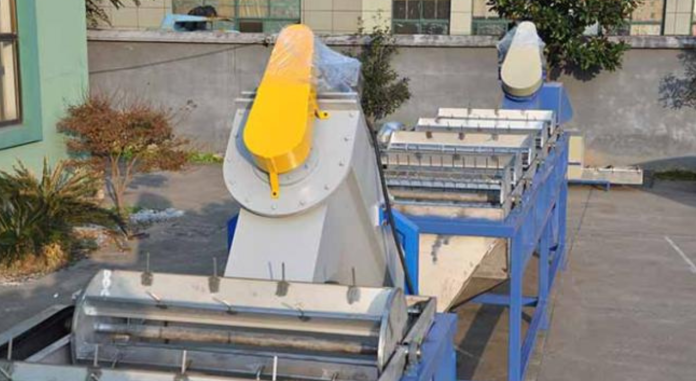Plastic recycling washing lines are essential to this procedure, which is essential to waste management and ecological sustainability. These systems are designed to clean and prepare plastic waste before it can be changed into reusable materials, contributing altogether to reducing natural effects. The types of plastic recycling washing lines change based on the specific plastics they handle and their intended applications.
Whether sorting and cleaning plastic bottles, films utilized in bundling, or strong materials like HDPE and PS/ABS, these washing lines guarantee that the reused plastics meet quality measures for reuse. By effectively expelling contaminants such as names click here, soil, and residues, these systems plan plastics for ensuing stages of reusing, emphasizing the significance of their part in advancing a circular economy and feasible asset administration.
Device for Recycling Plastic Bottles
Because of their awesome form and content, plastic bottles are one of the maximum popular kinds of garbage that can be recycled. Specialized equipment is needed for this process. Plastic bottle reusing gear regularly incorporates sorting frameworks that partition plastic bottles from other sorts of waste. Advanced sorting innovations can indeed distinguish between distinctive types of plastics and colors. Once sorted, the bottles are crushed into smaller pieces by pulverizing machines to encourage assist handling.
Plastic Film Recycling Machines
Plastic films, such as those utilized in packaging and agricultural applications, require a diverse approach to reusing. Plastic film reusing machines are designed to handle these lean, adaptable materials efficiently. Like bottle recycling, the primary step is to sort the plastic movies from other waste materials, which can be challenging due to the lightweight and flexible nature of the films. Plastic movies are destroyed into smaller pieces to make them less demanding to handle amid washing. The shredded movies are then washed to remove dirt, inks, and other contaminants, regularly including different washing stages to guarantee thorough cleaning.
HDPE Recycling Machines
High-density polyethylene (HDPE) is a flexible and broadly utilized sort of plastic found in things like drain jugs, cleanser bottles, and piping. HDPE recycling machines are specifically designed to handle this strong material. HDPE products are sorted from other types of plastic waste, which is pivotal as HDPE needs to be handled separately to preserve its properties. The sorted HDPE is then smashed into smaller flakes to encourage washing and advanced processing.
PS/ABS Washing Lines
PS/ABS washing lines are designed to handle these particular types of plastics. PS and ABS plastics are sorted from other waste materials, a basic step to ensure that the reusing process yields high-quality materials. The sorted plastics are crushed into smaller pieces to make them simpler to wash. The crushed PS and ABS are then washed to expel contaminants, frequently including different stages to guarantee careful cleaning.
Key Components of Plastic Recycling Washing Lines
Regardless of the type of plastic being reused, certain key components are common overall washing lines. Sorting systems are basic for separating diverse sorts of plastics and contaminants. Crushing machines decrease the measure of plastic waste to facilitate assisted processing. Cleaning systems wash the plastic waste to get rid of contaminants like dirt and nails.
Final Remarks
To make certain that plastic trash is thoroughly cleaned and equipped for additional processing, plastic recycling washing lines are an important element of the recycling system By understanding the different types of washing lines and their particular applications, we will appreciate the complexity and significance of this basic step in plastic reusing. Whether managed with plastic bottles, films, HDPE, or PS/ABS, these washing lines guarantee that we can turn plastic waste into profitable, reusable materials, contributing to a more maintainable future.
















